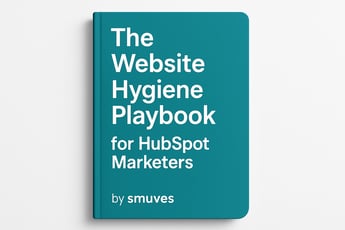Top 5 Website Schemas That Both Search and Answer Engines Love

SEO and AEO are often treated like separate playbooks, but there’s one tactic that gives you leverage in both worlds: schema markup.
Schema is the structured data that helps search engines and answer engines actually understand your content. Instead of guessing at what’s on your page, they get a clear, machine-readable map. That means richer search results, better chances of being cited in AI answers, and more qualified traffic with less effort.
To cut through the noise, we spoke to five industry pros to get their best advice on the five schemas that nearly every website can use. Here’s what they had to say.
Organization Schema
We started with Organization Schema because it’s foundational. When used correctly, it sets the record straight on how your brand is represented online.
Kristina Frunze, Founder of WebView SEO shared:
"One of my favorite schemas is Organization schema. I’ve seen it completely change how a brand appears online. One of the clients I worked with had scattered information online, they had the wrong logo, outdated contact details, missing social links, etc. After we added Organization Schema, their knowledge panel updated with the right info, AI answers started pulling the right details, and clicks on branded searches improved. The reason it works is simple: the schema gives search engines one reliable source of truth. When implementing, I suggest using JSON-LD with the essentials: name, logo, url, sameAs for social profiles, and contactPoint if you want customer service info to surface. Just don’t apply it to product or service pages (I've seen that way too many times) that’s where Product or LocalBusiness schema is a better fit."
FAQ Schema
FAQ schema is one of the most versatile formats when used properly. It helps surface concise answers in both search and answer engines.
Tanya Korteling, Co-Founder of ATK Digital Marketing, explained:
"FAQ schema works best where users will likely have specific, repeat questions, and where clear answers can be provided in a concise format. For a health tech client, adding it to their FAQ page provided clear answers that supported their buyers’ decision-making. For an ecommerce Shopify client, applying it to product and collection pages brought useful details into search results and helped drive clicks. It should only be used where the content genuinely adds value. It shouldn’t be applied to filler content, pages with no real FAQs, or added just to trigger FAQ drop-downs in search when they’re not genuinely useful. That kind of misuse can dilute trust and reduce its effectiveness. When applied in the right places, it builds trust and improves visibility."
HowTo Schema
HowTo schema stands apart because it encodes processes, not just metadata. This makes it especially powerful for answer engines.
David Lewallen, Head of AI & Search at Verbatim Digital, told us:
"HowTo Schema is uniquely powerful because it encodes process, not just metadata. Unlike Product or Article markup, which describe entities, HowTo breaks a task into steps, materials, and outcomes, exactly the way humans ask questions and the way AI systems reason. In search, this unlocks rich snippets that dominate visibility. In answer engines, when pipelines preserve structured data, it gives LLMs a clean procedural map to follow.
With HowTo Schema, you can encode it step by step. That structure allows Google to display rich recipe cards and gives AI assistants a precise, step-by-step process they can surface. If a user asks, ‘How long should I roast a 12 lb turkey?’, the AI can pull the exact cook time directly from the schema. This dual utility is what makes HowTo Schema one of the most future-proof formats for both SEO and AI visibility."
Article Schema
Article schema is the bread and butter of blog posts, news content, and editorial pages. It helps engines understand who wrote it, what it covers, and what’s being cited.
Navneet Kaur, SEO Consultant at thenavneet.com, shared:
"Adding nested quotation and citation schema to Article schema can be a powerful way to give any content more context. When citing experts, interviews, or notable figures, marking up quotes helps Google better understand and potentially highlight them in SERP features. This not only adds credibility but also enhances the semantic depth of the content. To maximize its impact, include key properties such as name, spokenByCharacter, text, and url—these connect the quote to its source and strengthen the structured data strategy. Just remember... don’t wrap every sentence in quotation schema; reserve it for meaningful, attributed quotes."
Product Schema
Finally, Product schema. While the name suggests ecommerce, it’s just as useful for service-based businesses.
Here’s my perspective as Nicole Pereira, Founder of Smuves:
"Product schema is like putting your storefront right inside the search results. Instead of forcing shoppers to click around, you’re giving them the essentials upfront: price, reviews, availability... or in the case of services, details about packages, timelines, or ratings.
And what’s wild is… AI uses that same structured data when recommending options in answers. It’s one of the few schemas that directly ties to conversions, not just visibility. For most ecommerce or service-based businesses, adding it to product templates or service modules is a no-brainer. The ROI is clear with cleaner listings, more qualified clicks, and better chances of being cited when someone asks an AI ‘what’s the best option?’"
Wrapping Up
These five schemas (Organization, FAQ, HowTo, Article, and Product) cover the essentials that most websites can deploy. They don’t just improve your SEO; they also give you visibility in the growing world of AEO. Think of them as the common language between your site and the machines deciding what to surface.
Of course, keeping up with all of this can feel overwhelming. That’s where tools like Smuves come in. Smuves helps busy marketers and web admins bulk edit their websites in HubSpot, making tasks like schema deployment less painful and a lot more scalable.


